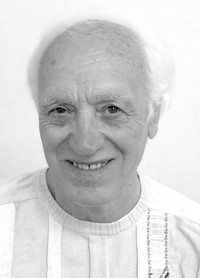DYNAMICS AND ENERGY OF STARTING ACCELERATION OF SPRINTER STUDENTS AND THE STRONGEST RUNNERS IN THE WORLD
Keywords:
100m run, starting acceleration, mathematical modeling, kinetics and energy of running, students, elite athletes.Abstract
Objective of the study was to compare the kinetic and dynamic indicators of the starting acceleration of student sprinters and the strongest athletes in the world.
Methods and structure of the study. The scientific work used experimental data on the spatio-temporal characteristics of the starting run at a distance of 100 m from eight students with results in the range of 11.08-11.45 s, as well as data from a report on the biomechanical study of the dynamics of running of participants in the finals of the 2017 World Championships in Athletics, having a result of 9.92–10.08 s. Using the least squares method, the constants (Vmax и Tau) of the running model equation V (t) = Vmax×(1- ) were selected. Based on this model, with the help of Newton's dynamics equations, the acceleration, force and mechanical power developed by athletes in time in the horizontal-longitudinal direction were calculated.
Results and conclusions. The greatest differences were found in the values of the maximum mechanical power developed in the horizontal-longitudinal direction. The strongest athletes of the world recorded an average value of 2435 ± 203 W, and for student runners - 1532 ± 224 W, which is 58.9% less, р≤0.05. The theoretical value of the maximum horizontal force at the initial moment of acceleration was 814±79 and 616±34 N for elite athletes and students, respectively. The difference is 32.1%, р≤0.05. Large amounts of strength and power allow world-class sprinters to reach a maximum speed in the range of 11.6–12.2 m/s, which is on average 17.2% higher than that of student runners.
References
Kryazhev V.D. Metodika issledovaniya kinematiki i kinetiki startovogo razbega studentov–sprinterov [Methodology for the study of kinematics and kinetics of the starting run of student sprinters]. Uchenye zapiski universiteta im. P.F. Lesgafta. 2021. No. 9 (182). pp. 244-249.
Bissas A. Biomechanical report for the IAAF World Championships in London, 2017/ Bissas A, Walker J, Tucker C, Paradisis G, Merlino S.// IAAF, 2019.
Morin J.B. A simple method for computing sprint acceleration kinetics from running velocity data: Replication study with improved design / Morin JB, Samozino P, Murata M, Cross MR, Nagahara R. // J. Biomech. 2019. Vol. 94. pр. 82-87.
Slawinski J. How 100-m event analyses improve our understanding of world-class men’s and women’s sprint performance / Slawinski, J., Termoz, N., Rabita, G., Guilhem G., Dorel, S., Morin, J.-B., Samozino, P // Scand. J. Med. Sci. Sports, 2017. Vol. 27. рp. 45-54.
Rabita G. Sprint mechanics in world-class athletes: A new insight into the limits of human locomotion. / Rabita, G., Dorel, S., Slawinski, J., Saez-de-Villarreal, E., Couturier, A., Samozino, P., Morin, J.B. // Scand.J. Med. Sci. Sport, 2015. Vol. 25. pр. 583-594.


